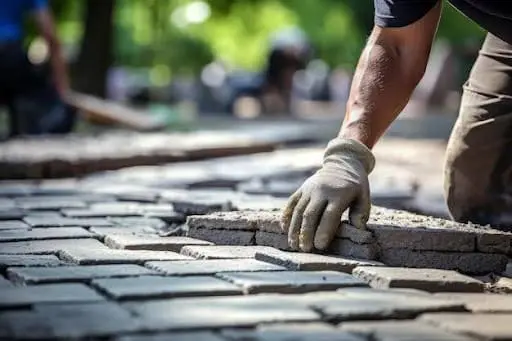Tips for Protecting Your Home from Bed Bugs
Imagine one day you wake up and find yourself dealing with a bed bug infestation. It’s a situation no one wants to face. Bed bugs are small, elusive pests known for their ability to infest homes and cause discomfort. These tiny, reddish-brown insects feed on human blood, usually at night. Understanding their behavior is the first step in prevention. They can hitchhike on luggage, furniture, and clothing, making their way into your home without detection. Awareness of their signs, like tiny blood spots on sheets or their distinctive musty odor, is crucial.

Whether you’re currently dealing with a bed bug problem or looking to prevent one, this guide will provide you with the knowledge and tools you need. Let’s explore the best strategies to safeguard your home against bed bugs, ensuring you and your family can enjoy a peaceful and pest-free living environment.
Regular Inspection and Monitoring
Regular inspection of your home is vital for early detection of bed bugs. Pay special attention to bedrooms and sleeping areas. Check your mattress seams, bed frames, and headboards regularly for signs of bed bugs, such as small brownish or reddish spots or the bugs themselves. Don’t forget to inspect areas where pets sleep, as bed bugs can also live in pet bedding. Using tools like bed bug traps and monitors can also help you catch an infestation early, making treatment easier and more effective. Services like EcoForce Bedbug Services not only help in treating infestations but also educate homeowners on recognizing and preventing bed bug problems.
Travel Smart to Avoid Bed Bugs
Travel is one of the most common ways bed bugs spread. To prevent bringing these pests home, always inspect hotel room beds, headboards, and furniture upon arrival. Keep your luggage on a rack away from the bed and walls. When returning home, unpack directly into your washing machine and wash all clothes in hot water. For non-washable items, a thorough inspection or even using a garment steamer can help eliminate any hitchhiking bed bugs.
Secondhand Items and Bed Bugs
Secondhand furniture and clothing can be great finds, but beware of bed bugs. Before bringing any secondhand items into your home, inspect them thoroughly for signs of bed bugs. Look for live bugs, eggs, or small reddish-brown spots. For furniture, consider using a flashlight to check in crevices and seams. If possible, treat items with a steamer or in a dryer in a high-heat setting to kill any hidden bed bugs. Being vigilant with secondhand items is a key step in keeping your home bed bug-free.
Proper Cleaning and Vacuuming Techniques
Regular cleaning is a powerful tool for preventing bed bug infestations. Vacuum your home frequently, focusing on carpets, upholstered furniture, and areas around beds. Use the vacuum’s crevice tool to reach tight spots where bed bugs may hide. After vacuuming, immediately dispose of the vacuum bag or contents in a sealed plastic bag outside your home to prevent any captured bed bugs from escaping back into your living spaces.
Steam cleaning can also be effective, especially on mattresses, sofas, and other fabric-covered items. The heat from the steam can kill bed bugs in all stages of their life cycle. Pay special attention to cracks and crevices where bed bugs could hide, and remember, consistency in cleaning is key to keeping these pests at bay.
Using Mattress and Pillow Encasements
Protecting your mattress and pillows with encasements is a proactive measure against bed bugs. These covers are designed to trap any bed bugs that may already be in your mattress or pillows, preventing them from biting you and spreading further in your home. They also make it easier to spot bed bugs, as there are no deep crevices for them to hide in. Choose encasements that are specifically designed for bed bug prevention, as they have strong zippers and reinforced seams. Regularly inspect these covers for any rips or tears and replace them if necessary.
Professional Bed Bug Treatments
While preventive measures are crucial, sometimes professional intervention is necessary, especially in severe infestations. Professional pest control services offer effective treatment options that are not typically available to the general public. These professionals have the expertise to assess the severity of the infestation and to apply treatments safely and effectively. They can use a combination of chemical and non-chemical methods to ensure that the entire bed bug population in your home is eradicated.
Chemical and Non-Chemical Treatments
There are various treatment options for bed bugs, both chemical and non-chemical. Chemical treatments include insecticides that are applied to areas where bed bugs hide. It’s essential to use products that are specifically labeled for bed bugs and to follow the manufacturer’s instructions carefully. Non-chemical treatments include heat treatment, where a room is heated to a temperature that kills bed bugs in all stages of their life cycle. Freezing infested items can also be effective, though it requires maintaining a low enough temperature for a sufficient period. Always consider safety and effectiveness when choosing a treatment method.
Educating Household Members
Educating all members of your household about bed bugs is critical in preventing infestations. Teach them how to identify bed bugs and their signs, and encourage them to report any potential sightings immediately. Discuss preventive measures, especially when traveling or bringing secondhand items into the home. Regular family discussions about bed bug prevention can keep everyone informed and vigilant, which is essential in keeping your home bed bug-free.
Staying Informed About Bed Bug Trends
Bed bugs are evolving pests, and their patterns of infestation can change. Staying informed about the latest bed bug trends and control methods is crucial. This includes understanding the latest research on bed bug behaviors, new treatment methods, and emerging infestations in your area. Reliable sources include pest control professionals, online resources from reputable pest control organizations, and local public health departments. Being knowledgeable helps you adapt your prevention strategies as needed and keeps you one step ahead of these pesky invaders.
Conclusion
Protecting your home from bed bugs requires a combination of knowledge, vigilance, and proactive measures. From using mattress and pillow encasements to seeking professional treatment options, each step plays a vital role in prevention and control. Chemical and non-chemical treatments offer various solutions, depending on the severity and specific circumstances of the infestation. Educating everyone in the household and staying informed about bed bug trends are critical practices that empower you to respond effectively to potential bed bug issues.









